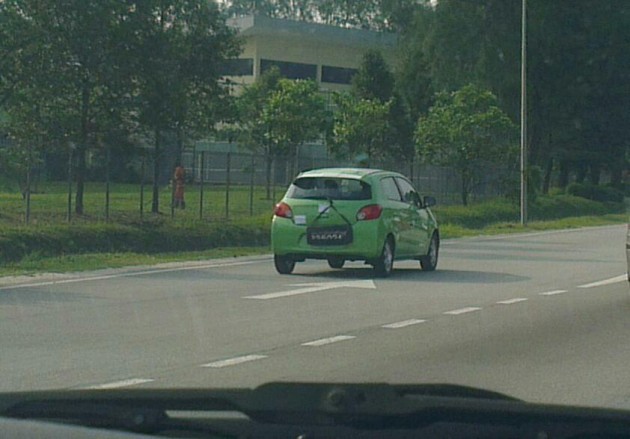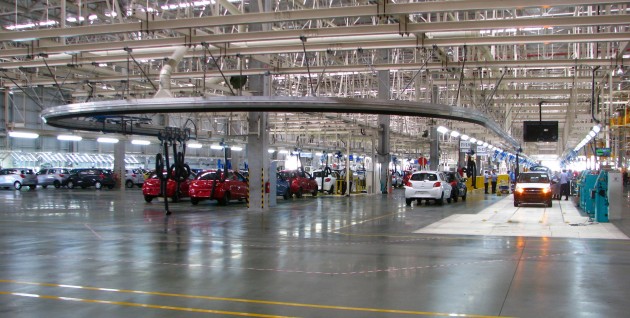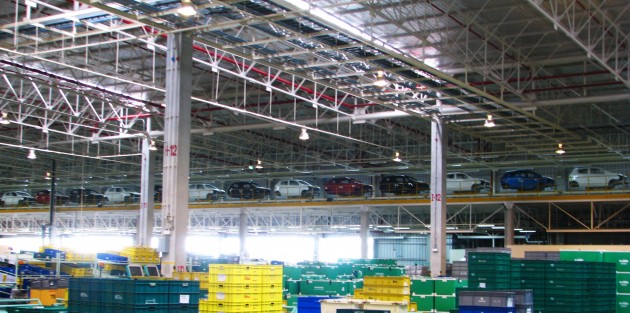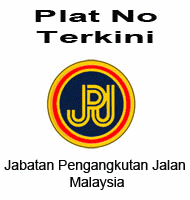The Mirage used to represent youthful images – speed, agility and sporty performance. But somewhere along the way everybody forgot about the name, even Mitsubishi it seems, who let the name slide into a more timid presence. Its current rebirth is more of a convenience however as the name of the game is now efficiency and low cost (for the manufacturer, increasingly a lot less for the buyers here in Malaysia).
The new generation Mitsubishi Mirage which was unveiled at the Tokyo late last year will be assembled in Thailand, specifically in a brand new outfit at the Laem Chabang industrial area roughly an hour outside Bangkok. We had the opportunity to tour the factory and more importantly get a little taste of how the new car performs.
Mitsubishi must be counting their blessings with having decided to invest up to RM690 million for the new factory. The Thailand government’s first-time car buyer programme massively promotes the purchase of cars made in in the country with engines below the 1500cc threshold.
Buyers need to be above 21 to qualify (among other rules) and if so ensures that you get a 100 per cent rebate, up to 100,000 baht. Thus the Mirage – with its 3-cylinder 1.2 litre MIVEC powerplant which also carries the eco-car status in that country – fits into this programme, a major boost when quite a few of its competitors are out of this zone.
The results are seen instantly – since it was launched during Bangkok Motor Show earlier this year, Mitsubishi Motors Thailand raked up more than 25,000 orders (and this was back in May) so clearly the Thai youths are keen to take benefit of this programme.
The Mirage looks to be a fuss free steer if the subdued design is anything to go by. A few variants were there at the Bira Circuit where the test drive is held; the GLS is top of the line with a CVT auto box; the GLX also with CVT but lacks a few kits, while the most basic version is also a GLX but with a 5-speed manual.
It’s nice to know that ABS and EBD is included as a standard item, even with the most basic spec. One thing I took careful note is how light these vehicles are – the top drawer GLS variant still only tips the scales at just 865kg.
However, despite the rather impressive list of kit, you can still feel that the Mirage really compromised on material quality. The seats are hard and the interior environment is bare. But in the context of being an eco-car in Thailand that will give its buyers a large wad of cash back, it won’t be a big issue.
My first lap around Bira is with the manual version and to sum it up, the car has potential. Despite the loose gear change it does not feel terribly underpowered. Everything else is within expectation – body roll is dramatic and the steering is over assisted and lacks feedback, qualities that exist in all the other variants.
The CVT box however just takes too much out of the puny motor. Acceleration and throttle response takes a dive. But it would still find place in our market for urban mobility with its claimed fuel efficiency. Of course, time was limited on track so we’ll use the factory claim of 22km per litre which is certainly notable (measured with in-house standards, in combined cycle).
Safety was a big requirement and thanks to that the Mirage, although lightweight, can boast of having Mitsubishi’s RISE body design complemented by extensive use of high-tensile steel. With the engine’s 77bhp and 100Nm, it should be just enough to suit basic daily driving needs. The Mirage is a name that most Malaysians know of, so that’s part of the job done. The real question is of course, the price.
-
-
-
-
-

-

-
** Sources: Paultan
-
-
-
-
-
-
-
-
-
-
-
-
-




























